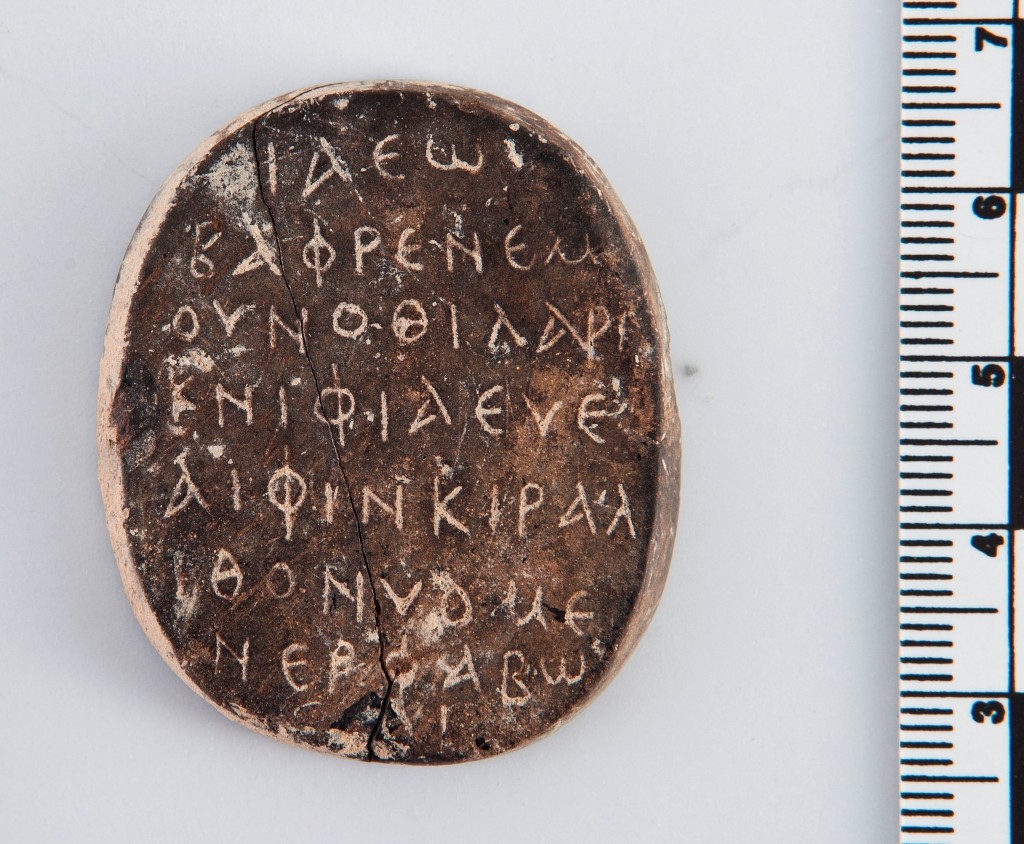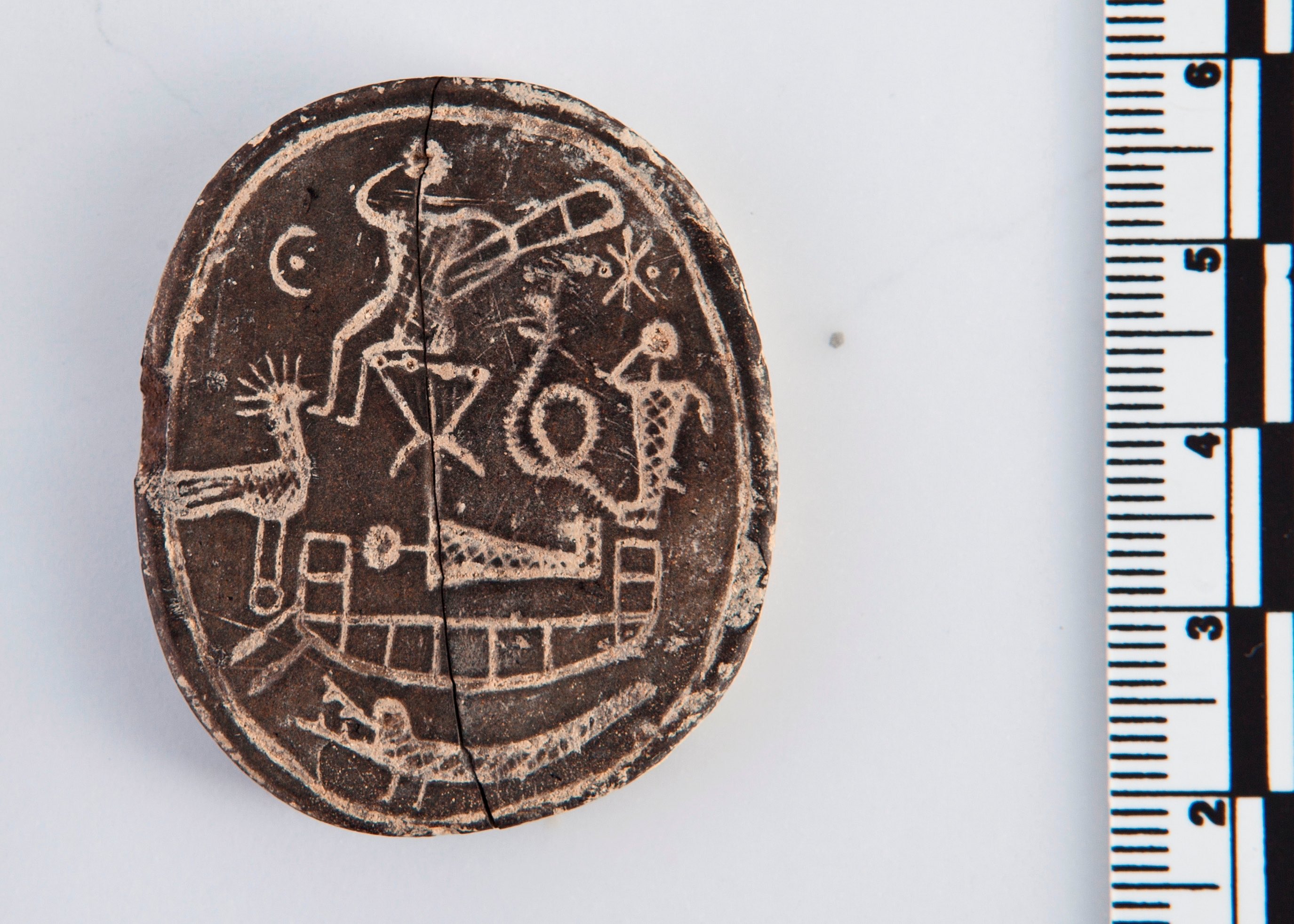According to Live Science:
The amulet was discovered in the summer of 2011 by archaeologists with the Paphos Agora Project. Led by Jagiellonian University professor Ewdoksia Papuci-Wladyka, this team is excavating an ancient agora at Nea Paphos, and uncovered this amulet during their work. Agoras served as gathering places in the ancient world.
At the bottom, there is a mummy (likely the Egyptian god Osiris) wrapped in bandages, lying on a boat. Above the mummy, there is an image of Harpocrates, a god of silence, shown sitting on a stool. Harpocrates’ right hand is raised up to his lips and there is a scepter in his left hand. To the right of Harpocrates there is a dog-headed creature called a cynocephalus that has a paw beside its lips, mimicking Harpocrates gesture. There is a snake between the cynocephalus and Harpocrates, the snake’s head facing Harpocrates. There are also depictions of a crocodile, bird (likely a rooster), half moon and a star.
The amulet has an inscription on the other side:

The amulet contains a Greek inscription, 59 letters long, which reads the same backwards as it does forwards, a feature known as a palindrome. The three letters at the very bottom, ΕΑΙ, were squeezed in and are hard to read. The amulet is about 1.4 inches by 1.6 inches (34.9 millimeters by 41.2 millimeters) in size. The inscription translates as “Iahweh is the bearer of the secret name, the lion of Re secure in his shrine.” Although the translation doesn’t read as a palindrome, the original ancient Greek text does.
Credit: Photo by Marcin Iwan, artifact from the excavations of Jagiellonian University in Krakow at Paphos Agora

Map of monuments in Paphos, Cyprus. Credit: Paphos Agora Project, archaeological expedition of the Jagiellonian University
The amulet reads:
ΙΑΕW
ΒΑΦΡΕΝΕΜ
ΟΥΝΟΘΙΛΑΡΙ
ΚΝΙΦΙΑΕΥΕ
ΑΙΦΙΝΚΙΡΑΛ
ΙΘΟΝΥΟΜΕ
ΝΕΡΦΑΒW
ΕΑΙ
This translates to “Iahweh(a god)is the bearer of the secret name, the lion of Re secure in his shrine.”
It “rather seems that Christian and pagan religions coexisted in Paphos in times of [the] amulet being in use,” Papuci-Wladyka told Live Science in an email.
That would be around 5th century CE.




